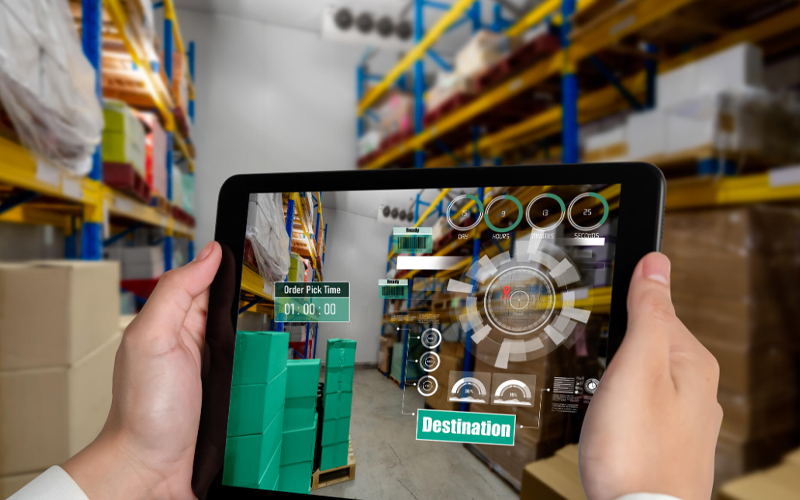Global supply chains today are facing unprecedented uncertainties, from geopolitical tensions to environmental disruptions. Modern organisations must, therefore, focus on building resilient supply chains by leveraging advanced technology and supply chain risk analytics to anticipate and respond to potential challenges. By integrating predictive insights and advanced risk modelling into their logistics workflows, companies can safeguard operations, reduce vulnerabilities, and ensure business continuity across complex, interconnected international networks.
understanding supply chain resilience
A resilient supply chain is one that adapts to changing market conditions and recovers quickly from disruptions without compromising performance efficiency. The key risk factors businesses must navigate when building a resilient supply chain include geopolitical instability, economic volatility, climate events, cyber threats, and transportation or supplier challenges. Traditional risk management often falls short in addressing these complexities.
Major disruptions such as the global chip shortage, the Suez Canal blockage, and the COVID-19 pandemic have underscored the critical need for supply chain agility. Modern supply chain risk analytics solutions are playing a key role in enhancing supply chain agility and resilience with real-time visibility, scenario planning, and actionable insights. Organisations leveraging predictive risk modelling can proactively identify vulnerabilities, prioritise high-impact risks, and maintain operational continuity despite uncertainty.
Infosys BPM offers a comprehensive suite of digital supply chain solutions that help companies navigate the global uncertainties to build agile and responsive logistics networks. By integrating advanced analytics, predictive modelling, and technology-driven insights, organisations can improve responsiveness, reduce risk exposure, and build resilient supply chains.
building resilient supply chains: 9 key best practices
Building resilient supply chains requires a systematic approach and ongoing efforts. Here are nine best practices that combine strategy, technology, and foresight to enhance supply chain agility and resilience:
identify and map supply chain risks
AOrganisations must map their entire supply chain, from suppliers to end customers, identifying potential vulnerabilities. Using supply chain risk analytics, businesses can quantify the likelihood and impact of potential disruptions, whether due to natural events, geopolitical shifts, or cyber threats. Combining these insights with real-time visibility allows rapid intervention before issues escalate.
document controls to mitigate risks
Clear controls and standard operating procedures help prevent disruptions from becoming crises. Documenting mitigation strategies ensures teams know how to respond, supports compliance, and strengthens accountability. Advanced risk analytics can continuously assess these controls’ effectiveness and help businesses adapt.
prioritise and manage high-impact risks
Not all risks carry the same weight. Companies should focus on high-impact threats that could halt operations or damage reputation. Leveraging predictive risk modelling, decision-makers can forecast potential crises and deploy resources strategically, including cyber threat prevention and critical supplier monitoring.
leverage scenario planning and risk management frameworks
Scenario planning allows businesses to model potential disruptions and evaluate responses. Combined with predictive risk modelling, organisations can test multiple outcomes, refine strategies, and prepare for unforeseen challenges to build a resilient supply chain.
plan for disruptions proactively
Disruption planning goes beyond scenario modelling and reactive responses. Businesses must establish clear continuity plans and define crisis response protocols. Predictive models enable proactive risk management, guiding teams through recovery while maintaining operational performance.
optimise inventory strategically
Balancing inventory prevents stockouts and overstocking. Using advanced analytics, companies can forecast demand fluctuations, align production schedules, and maintain buffers that support resilience without excessive capital lock-up.
diversify your supply chain
Dependence on a few suppliers increases vulnerability. Diversifying supplier bases and establishing collaborative partnerships enhances flexibility and reduces risk. Combining supplier intelligence with analytics-driven insights enables smarter sourcing and monitoring decisions.
leverage technology for agility
Advanced technologies like IoT, AI, and blockchain provide real-time alerts, anomaly detection, and transparent operations. Integrating supply chain risk analytics with these tools offers actionable insights, improves automation capabilities, and increases responsiveness to emerging disruptions.
cultivate a resilient mindset
Employees play a critical role in building resilient supply chains. Investing in workforce development strengthens organisational agility. Training programs, knowledge sharing, and a culture of adaptability empower teams to anticipate challenges and respond decisively.
supply chain resilience: challenges and future outlook
Building resilient supply chains is not without hurdles. Resource constraints, legacy systems, fragmented data, cultural resistance, model bias, and human-AI disconnects often limit adoption. Geopolitical uncertainties further complicate decision-making. Despite these challenges, the future lies in embracing innovation and agility. Technologies like digital twins, self-learning models, and autonomous supply chains will enable organisations to anticipate risks, respond quickly, and maintain competitive advantage in volatile environments. Continuous learning, experimentation, and collaboration are now essential for sustainable resilience.
conclusion
Resilient supply chains combine foresight, technology, and strategic planning. By mapping risks, prioritising vulnerabilities, diversifying suppliers, and leveraging supply chain risk analytics, organisations can maintain continuity, responsiveness, and agility. As disruptions grow in scale and complexity, embracing predictive risk modelling and innovative practices is vital for building resilient supply chains that ensure long-term competitiveness and operational stability.
FAQ
Supply chain risk analytics utilizes predictive risk modeling and real-time data to anticipate disruptions before they occur, rather than reacting after the fact. Traditional methods often rely on historical data that fails to account for rapid geopolitical or environmental shifts. This proactive approach allows organizations to identify vulnerabilities across complex networks and deploy mitigation strategies with greater agility.
Predictive risk modeling in 2026 focuses on mitigating high-impact threats such as geopolitical instability, cyber attacks on digital twins, and climate-driven transportation bottlenecks. By mapping the entire supply chain from tier-one suppliers to end customers, enterprises can quantify the likelihood of these specific disruptions. This transparency enables leaders to prioritize high-risk segments and maintain business continuity despite global volatility.
Digital twins allow organizations to model potential disruptions and test multiple "what-if" scenarios in a risk-free virtual environment. This integration reduces the cost of failure by refining response protocols before a physical crisis occurs. Leveraging digital supply chain solutions accelerates recovery times and optimizes inventory buffers without locking up excessive capital.
Diversifying the supplier base reduces dependence on specific geographic regions or single-source providers, effectively spreading risk across the network. Collaborative partnerships supported by real-time intelligence allow for rapid sourcing shifts during localized disruptions. This flexibility ensures that the supply chain remains responsive and adaptive to shifting market norms and geopolitical uncertainties.








